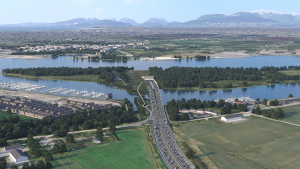The demand for green building products and technologies in British Columbia received a boost in April 2017 when the BC Energy Step Code came into force.
The Step Code is part of the BC Building Code, and is intended to make new construction in the province net-zero energy ready by 2032.
A new study detailing the size of the market for green building products, and the corresponding opportunities for product developers, will be made public at the Buildex session called Economic Development Impacts of the BC Energy Step Code on Feb. 13.
The presenters are Paul Shorthouse, director of the Delphi Group, and
Juvarya Veltkamp, manager of green economy initiatives at the Vancouver Economic Commission (VEC).
In addition to Shorthouse and Veltkamp, four local manufacturers of green building products will be taking part in the presentation.
The study that is the subject of the presentation quantifies the size of the market for high performance building products, as well as industry investments, economic development and job creation potential in B.C.
The six panelists will discuss the particulars of the B.C. green supply chain, and make recommendations on how to stimulate local production and innovation in the green building product industry.
Shorthouse and Veltkamp say presentation attendees will gain a better understanding of the economic impact of the Energy Step Code.
The green building supply chain in B.C. and its ability — or lack thereof — to deliver on the Energy Step Code; and how to address gaps in the supply chain and ensure industry competitiveness.
The province’s green economy — Vancouver’s, in particular — is already a significant contributor to the economy as a whole.
“One in 15 Vancouver residents works in the green economy,” said Veltkamp. “They work in such occupations as designing and constructing green buildings, green building demolition, recycling and materials processing.”
Veltkamp says the study looks at six product groups: Fenestration, insulation, heat pumps, heat recovery ventilators, drain water heat recovery systems and domestic hot water systems.
“In B.C. there are many fenestration companies, but not many other kinds of businesses,” she said. “We want new companies to start up, and we’ve identified and quantified the local market for them to take advantage of.”
Working with Veltkamp and the VEC, Shorthouse and Delphi led the research behind the report and developed its product demand forecasting model.
“It forecasts demand assuming the current adoption rate for the products, so the forecast will be on the conservative side,” said Shorthouse. “We expect demand will increase over time.”
The model takes into account five different building types (single family, three types of multi-unit residential and commercial office buildings) and the Energy Step Code steps that correspond to them.
“The model enables interested people to estimate the demand and market value of high-performance products and equipment — fenestration, insulation, HVAC equipment, etc. — from the present until 2032, based on various Step Code adoption rates and scenarios,” said Shorthouse. “It provides a certain amount of certainty on the size of the local market.”
Now, about the BC Energy Step Code.
The Code is a voluntary provincial standard that provides a step-by-step approach to achieving more energy-efficient buildings. It goes beyond the requirements of the BC Building Code.
The Step Code establishes a series of measurable, performance-based energy-efficiency requirements for construction that builders can follow and communities can adopt in bylaws and policies. In addition to supporting long-term improvements in energy efficiency in the Building Code, the Step Code is said to make building regulations more consistent across B.C.
A single provincial standard, the Step Code replaces the patchwork of different green building standards enacted by local governments in the past.
The Step Code takes a new, performance-based, rather than the traditional prescriptive, approach. This means that it does not specify how to construct a building. Instead, it identifies an energy-efficiency target that must be met and lets designers and builders figure out how to meet it.
To comply with the Step Code, builders must use energy modeling software and on-site testing to demonstrate that both their design and the finished building meet the Code’s requirements.











Recent Comments
comments for this post are closed